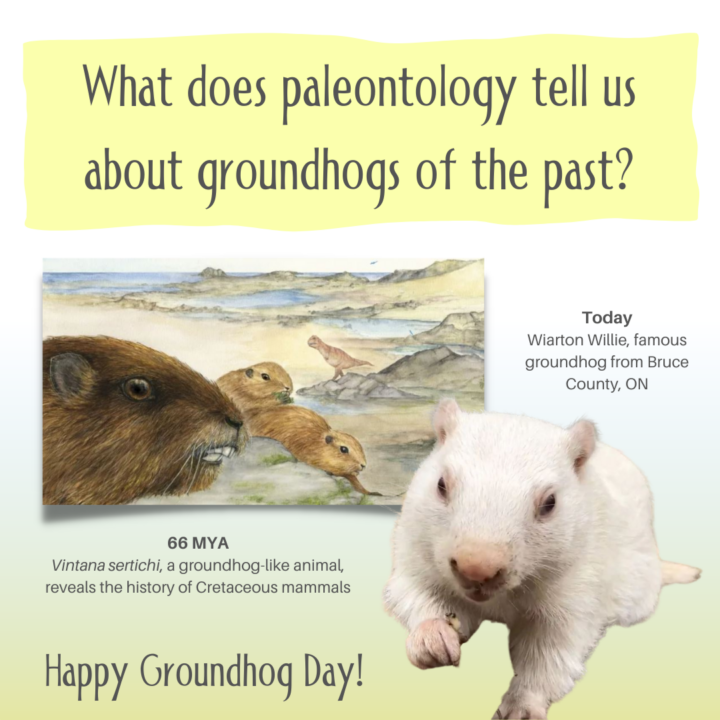
Cretaceous Groundhog Day: Paleo-prognosticating!
February 2nd is Groundhog Day, a day when we listen anxiously to hear whether local rodent celebrities like Punxsutawney Phil or Wiarton Willie will see their shadows when they emerge from their burrows. If they spy their shadow, six more weeks of winter are on the way!
Here in northern Alberta, the point seems moot. We are guaranteed to have six more weeks of winter regardless of what the weather prognosticating rodents see. We just hope it’s not going to be sixteen more weeks of winter…

The fossil history of the groundhog Marmota monax (also commonly called a woodchuck or whistle pig) is not very well known. Fossilized burrows attributed to a groundhog-like animal have been found in rocks around 35 million years ago, but that’s about as good as it gets. During the Cretaceous period however, there was a groundhog-like animal that may not have been so good at foretelling the weather, but helped paleontologists understand the evolution of mammals.
In 2010, paleontologists working in Madagascar discovered the fossils of an extinct mammal resembling a modern groundhog. The animal, dubbed Vintana sertichi, would have weighed about nine kilograms (20 pounds), and been the size of a small dog. It lived right at the end of the Age of Dinosaurs, about 66 million years ago, and is the second-largest mammal ever found in Cretaceous rocks.
Despite its resemblance to a groundhog, Vintana sertichi belonged to an extinct group of mammals called gondwanatherians. It had a bizarre mix of primitive and advanced mammalian features.
“Throw together some anatomical features from ancient mammal-like reptiles, Pleistocene ground sloths, an extant rodent and maybe a few bits and pieces from the Muppets on ‘Sesame Street’ and you might get something that resembles the cranium of Vintana,” said Stony Brook University palaeontologist David Krause, who led the study.
Paleontologists love ‘weird things’. They force us to challenge our assumptions about how the history of life unfolded. In the case of mammal evolution, Vintana sertichi is helping scientists to understand where modern mammals came from, and the features they may have had.
Will the groundhog see its shadow this year? Who knows? But perhaps groundhogs and their kind may one day help us to understand where we come from.
